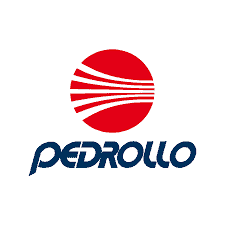Translink turned 50 in 2022 – a landmark anniversary for the mid-market corporate finance leader. In a global market mired by the Russian Ukraine conflict, rising inflation, interest hikes, political and economic uncertainty and the COVID-19 pandemic, Translink Corporate Finance conducted significant transactions across offices spanning 6 continents.
Fast forward to 2050 and what will the global logistics sector look like? Translink Corporate Finance, in partnership with the Stellenbosch Business School’s Institute for Futures Research has explored plausible futures for the industry in its latest sector report entitled Tomorrow: 2050 Alternative Futures for Logistics. Focusing primarily on the implications for M&A, these futures are based on two critical scenario-shaping factors impacting logistics globally: climate change mitigation and the development and adoption of new technologies.
Cross-border M&A deals are strongly influenced by timing, relationships and identifying compelling opportunities. This is the story of what culminated in December 2020, when Italian family-owned company, Pedrollo Group acquired US-based Superior Pump.
While already recognised as a world-renowned brand within the electric pump sector, exporting more than 80% of its product outside of Italy, the United States represents less than 1% of Pedrollo’s global sales.
In January 2022, Translink Italy and Translink in the United States acted as the exclusive advisors on the sale of Dreno Pompe to Industrial Flow Solutions LLC (IFS). The sale enabled IFS – a leading US-based provider of industrial pumping solutions – to expand its product offering and penetrate the European market by assessing local production and supply chain capabilities as well as new sales channels in the continent.
This successful deal highlighted the many nuances of sell-side cross-border deals, as well as the advantages of using an advisor with global representation.
Leading independent M&A advisory firms BHP Corporate Finance and IMA Corporate Finance are collaborating and have officially changed their names to Translink Corporate Finance.
Translink, The leading mid-market corporate financial advisory firm, has over 300 experts covering more than 35 countries on six continents. It’s this international footprint of teams with deep local market knowledge and specialised sector expertise that enables Translink to identify M&A opportunities across the globe for clients.
Given American Trailer Rental Group’s many acquisitions over the past two years, Dinan & Company’s Mohit Mehta shares some insights about these successful transactions and what the industry can expect going forward.
Strong tailwinds associated within the logistics industry along with increasing supply-chain complexities, e-commerce growth and the outsourcing of logistics are all factors that have created strong demand for the storage and cartage segment of the US trailer rental market.
A significant player within this sector is American Trailer Rental Group (ATRG), a portfolio company of Wind Point Partners, a regional provider of trailer rental and transportation services for a diverse range of industries including warehousing, distribution, transportation, logistics, manufacturing, retail and construction. This family of companies has a rental fleet approaching 16,000 units representing some of America’s most respected regional trailer rental providers.
To date, Dinan has assisted ATRG with completing seven acquisitions since 2021.
According to Mohit Mehta, Director of International Business at Dinan & Company, this series of acquisitions is a result of ATRG’s focused and disciplined strategy to grow both inorganically via acquisition and through greenfield operations in targeted geographic regions with robust manufacturing and warehousing markets.
Dinan & Company, an established, middle-market investment bank, is the exclusive US member of Translink Corporate Finance, and advised ATRG on these key acquisitions. These include the acquisitions of Arizona Storage Rental, Ervin, Ala-Ga Trailer Leasing, Storage Trailers of Alabama and Smartway in 2021 and B&W Trailer Rental and Hasiuk Trailer Rentals last year.
“Throughout the course of our relationship with ATRG, Dinan & Company identified and contacted over 500 potential targets in ATRG’s geographies of interest, ultimately qualifying and making initial introductions with approximately 50 potential targets to ATRG,” says Mehta, who adds that in addition to the seven transactions closed to date, conversations with additional and prospective targets are ongoing.
Mehta says that while some transactions can conclude within a fairly quick timeline, others can take longer. He says that building and nurturing relationships with the sellers on behalf of their clients until they are ready to transact, is key.
With a 35-year history of successfully generating proprietary deal-flow for their private equity and strategic clients, critical to Dinan & Company’s success is its proprietary database of over
450,000 privately held North American targets. “This is one of the most robust and comprehensive compilations of private company data available today. We have a dedicated research staff of 25 analysts who are constantly keeping this database up to date, adding approximately 32,000 new targets annually,” Mehta says. This, in tandem with a large team of experienced professionals and a highly structured buy-side acquisition search program, allows Dinan to quickly onboard clients, understand their acquisition strategy and acquisition criteria, and build a strong pipeline of targets for their clients to pursue.
Through their experience within the US logistics sector, Mehta and his team have not only been able to build relationships and execute buy and build strategies for their clients but are also well versed in predicting interesting trends and finding more opportunities within the US logistics sector and beyond.
Most notable within this sector in 2023, and the foreseeable future, will be the impact of technology along with changing customer expectations.
As expected, technology is changing every aspect of logistics both within the United States and globally. This is especially relevant when it comes to data analytics, automation and platform solutions. According to the World Economic Forum, the future of the logistics industry will not only be more digitized but also more agile, multifunctional and more open across geographies. As such, having a defined digital strategy has never been more critical.
Along with new technology comes the need for logistics companies to attract more tech-savvy and skilled employees to grow and implement these new technologies.
The potential impact of technology within the logistics industry is enormous, but many within the sector have been slower to implement it. Technological innovations within the sector will continue to play an enormous role in driving deals. Logistics companies who don’t jump on the technology bandwagon will risk being permanently left behind.
As with most other industries, consumers are increasingly expecting more when it comes to faster more flexible shipments, greater transparency and lower prices, and the logistics sector is no exception. With operating models and profitability under strain, efficiency and performance is tantamount to success going forward.
In fact, according to a survey of logistics executives conducted by Accenture, the most important driver of change in the industry today is evolving customer expectations. The report states that logistics companies believe that their customers want to be offered a broader set of logistics services, which either includes extending their existing services to include upstream and / or downstream solutions or expanding their services across more geographies, industries, or modes of transport.
An article published in Freight Waves last year reported that the post-Covid era has seen M&A activity within the logistics industry remain robust, including record earnings and generation of cash flow reported by some of the key players within the industry.
According to Statista, US logistics in 2020 was sized at more than $ 2 trillion and ranked second after the Asia-Pacific region.
This highly integrated supply chain network links producers and consumers through multiple transportation modes, including air and express delivery services, freight rail, maritime shipping, and truck transport.
Given the size of the market along with existing trends and opportunities, Dinan & Company looks forward to a continued partnership with ATRG to identify more agile, responsible and resilient growth opportunities into 2023 and beyond.
In the first part of this series, Translink International Vice Chairman and Chairman at Translink Corporate Finance Italy, David Strempel, unpacked the importance of a clear M&A strategy and how global M&A advisors can identify trends, opportunities and challenges, plan around them and advise accordingly. Here he unpacks how personalities and cultures can potentially hinder a transaction unless managed properly, and the important role played by advisors in finding solutions and smoothing what is often a complicated transaction.
The dealmaking process behind corporate M&As can be highly complex, with a significant number of factors that need to be negotiated between the time a letter of intent is signed until the deal is officially closed.
There can also be a great deal at stake for the companies involved, not only financially but also from a reputational and market sentiment perspective.
Financing is a major factor in all mergers and acquisition transactions, especially in buy outs, and is an important driver of valuations.
Companies looking to buy businesses through third party financing, or to have a minority or majority sponsor onboard, currently have to deal with higher financing costs and lower valuations. This is because of the persistent volatile macro-economic climate, which includes the issue of inflation, the Russian/ Ukraine conflict, with all of them causing rising interest rates. These all directly impact the M&A industry.
Translink Corporate Finance in Finland has been shortlisted for the prestigious Mergermarket Finland Financial Advisor of the Year 2022 Award. The list of finalists was announced last month, with the other contestants including advisors such as Goldman Sachs and Carnegie. The two main categories of these country-specific awards include financial advisors and legal advisors.









